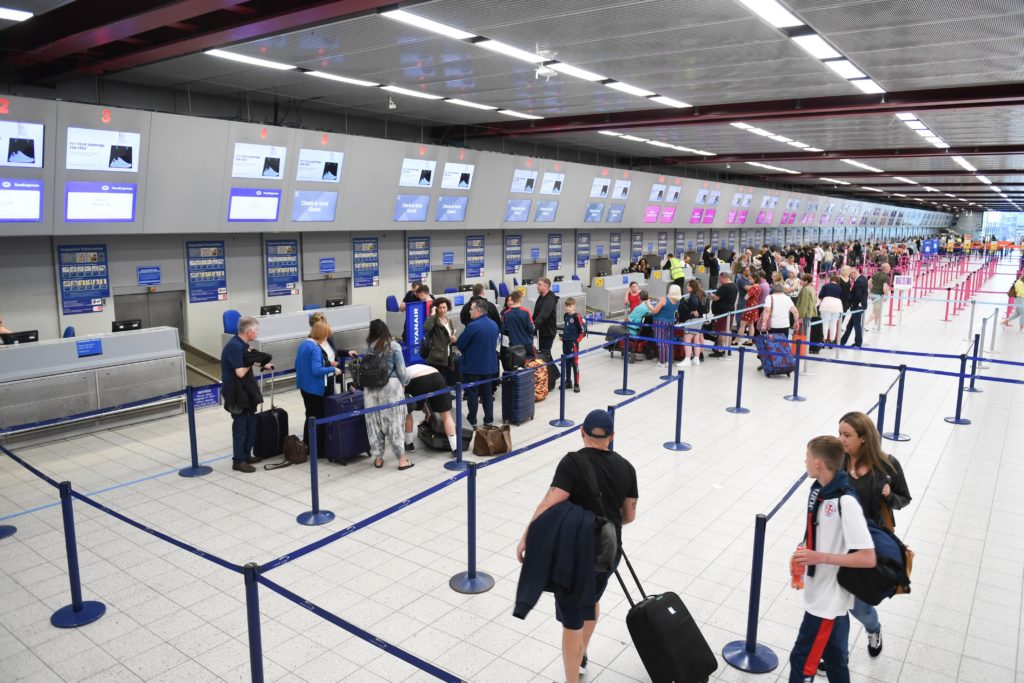Estimated reading time 6 minutes, 8 seconds.
The COVID-19 pandemic is wreaking havoc on the global aviation industry. Over the next couple of years, the airline business is expected to face bankruptcies, mergers, headcount reductions, shrinking route networks, downsized fleets, earlier than planned aircraft model retirements, debt and equity financings and government bailouts. As a result, airliner order backlogs are declining and new aircraft deliveries are expected to be limited in the near term.

Despite this nightmarish scenario, efforts are underway to prepare for a gradual return to what was deemed to be a normal state of affairs just a few months ago. The three factors that will likely determine the strength and timing of any recovery in passenger traffic are government restrictions, market demand and consumer confidence.
The reopening of borders, international and domestic, will be required in order to stimulate future bookings. Other restrictions on the free movement of citizens will have to be substantially reduced, if not outright abolished.
While technology has provided alternate forms of communications, face-to-face meetings are expected to remain a priority for many. Business travel approvals, whether on behalf of private sector or public sector employers, will be sensitive to budgets. Leisure travel, be it family, educational or tourism-related, will be subject to the state of personal finances.
Finally, consumer confidence in the safety of air travel is expected to govern the degree of public interest in flying. The thought of hiking through crowded terminal buildings and spending hours confined in close proximity to others could dampen the wanderlust of some. The cleanliness of airport facilities and aircraft will be top of mind for most travellers.
Airbus has recognized that the timely communication of relevant information will be critical in the effort to encourage regulatory authorities, assist airlines and reassure the travelling public during this global crisis. To learn more about the OEM’s new initiative called “Keep Trust in Air Travel,” Skies interviewed Jean-Brice Dumont – the airframer’s executive vice-president, Engineering.
Given that health authorities around the globe are setting policies related to human behaviour, Skies asked Dumont if the air transport industry and aircraft manufacturers have any input into the creation of coronavirus-related regulations? He responded, “We need to bridge the worlds of health and aviation. It is essential that these two authorities (health and aviation), country by country, region by region around the world, work together closely to establish the right set of solutions. To keep the focus on the health of the passengers and at the same time not being overly prescriptive. The introduction of excess requirements would create an unbearable situation for airlines and their customers.”
With respect to social distancing aboard aircraft, there has been speculation that carriers might refrain from using the middle seats in a typical six-abreast configuration. Some have even suggested that the middle seats be removed to save weight. While this might provide more space between passengers, it would significantly reduce an airline’s available seat capacity. Passenger load factor breakeven levels would shift substantially higher and any offsetting air fare increases would probably retard passenger traffic growth. Does Airbus see this transpiring? Dumont replied, “We see the risk, but we don’t believe that it makes sense. We need regulators around the world to promote a unified set of requirements and guidelines related to operating within a pandemic.”
Airbus is communicating best practices to airlines, as well. For example, before COVID-19, air crews would usually engage the ventilation system after the passengers had started to board an aircraft. Now, Airbus is recommending that the ventilation system be started prior to the boarding process. That way, the cabin air can be circulated at least twice before passengers enter the aircraft. This helps to ensure the cleanliness of the cabin environment.
Dumont believes that Airbus can influence passenger confidence. “We have to fight the opinion of some that it is easy to become contaminated aboard an aircraft. By design, it is exactly the opposite.” He explained that during flight, half the cabin air is exchanged with the outside air, while the other half is recycled internally every two to three minutes through high-efficiency particulate arrestors. Those HEPA filters capture 99.97 per cent of particulates the size of COVID-19. Furthermore, there is no longitudinal flow of the air, as it is blown down from the ceiling and then taken in at the floor. He noted that the interior of an airliner is likely more sanitary than a typical office. Of course, human behaviour is very important and Airbus is encouraging the use of masks by passengers and the courteous practice of sneezing/coughing into one’s own elbow.
This extraordinary situation will improve significantly once there is a vaccine for the virus. In the meantime, Dumont notes, “Our challenge now is to have the healthiest, most trustworthy, transportation that we can offer. This pandemic is going to be around for awhile, so we need to learn how to live with it and how to have passengers fly safely. Like the economy, aviation must restart before COVID-19 is completely over. That will be accomplished by taking lots of measures for the protection of people.”









How about using the central line space for cargo, perhaps offsetting the reduction in paying travellers. Every industry will have to be re-configured to adapt to a ‘new’ normal.
Some thoughts. I suspect Airbus is working through IATA to draft common international regulatory procedures. Second, I assume airlines are operating their recirculation systems on ‘max’ or 100% levels. and lastly, families will want to be seated next to one and other. So, there will be situations were the centre seat will be employed. Centre seats can easily be folded down to create a table area or larger armrest. I don’t think cargo makes a lot of sense in a passenger cabin.